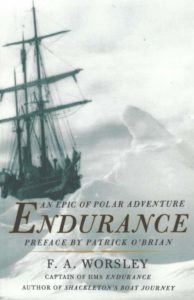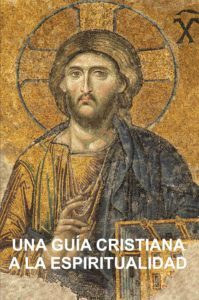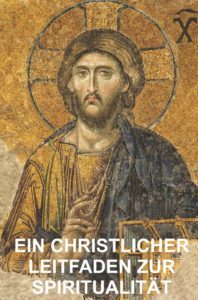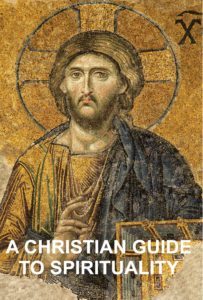Stephen W. Hiemstra's Blog, page 126
March 15, 2021
Community: Monday Monologues (podcast) March 15, 2021
 Stephen W. Hiemstra 2020 (Ken Burtram Photography)
Stephen W. Hiemstra 2020 (Ken Burtram Photography)
By Stephen W. Hiemstra
This morning I will share a prayer and reflect on community. After listening, please click here to take a brief listener survey (10 questions).
To listen, click on this link.
Hear the words; Walk the steps; Experience the joy!
Community: Monday Monologues (podcast) March 15, 2021
Also see:
Monday Monologue On March 26, 2018
Other ways to engage online:
Author site: http://www.StephenWHiemstra.net,
Publisher site: http://www.T2Pneuma.com.
Newsletter: https://bit.ly/Valtine_2021
The post Community: Monday Monologues (podcast) March 15, 2021 appeared first on T2Pneuma.net.
March 14, 2021
Prayer Day 17
Por Stephen W. Hiemstra
Loving Father, Beloved Son, Compassionate Spirit,
We praise you for your example of unity in holiness.
Set us apart in holiness; draw us together.
Encourage us to use our spiritual gifts for the common good and to rejoice when others do too.
In Jesus’ precious name, Amen.
Prayer Day 17
Also see:
Believer’s Prayer
Other ways to engage online:
Author site: http://www.StephenWHiemstra.net
Purchase Book: http://www.T2Pneuma.com
Newsletter: https://bit.ly/Valtine_2021
The post Prayer Day 17 appeared first on T2Pneuma.net.
Oración Dia 17
Padre amoroso. Hijo Amado, Espíritu de Compasión.
Te alabamos por tu ejemplo de unidad en santidad.
Diferencia nos en santidad; Atrae nos juntos.
Anime nos a utilizar nuestros dones espiritual para el bien común y a regocijar cuando también los demás lo hacen.
En el precioso nombre de Jesús, Amén.
Oración Dia 17
Ver también:
Prefacio de La Guía Cristiana a la Espiritualidad
Otras formas de participar en línea:
Sitio del autor: http://www.StephenWHiemstra.net
Comprar Libro: http://www.T2Pneuma.com
Boletín informativo: https://bit.ly/Valtine_2021
The post Oración Dia 17 appeared first on T2Pneuma.net.
Gebetstag 17
Von Stephen W. Hiemstra
Liebender Vater, Geliebter Sohn, Mitfühlender Geist,
Wir preisen dich für deiner Beispiel der Einheit in der Heiligkeit.
Setze uns in der Heiligkeit auseinander; Bringe uns in Einheit zusammen.
Ermutigen Sie uns, unsere spirituellen Gaben für das Gemeinwohl einzusetzen und sich zu freuen, wenn andere dies auch tun.
In Jesu kostbarem Namen, Amen.
Gebetstag 17
Siehe auch:
Einleitung auf Ein Christlicher Leitfaden zur Spiritualität
Andere Möglichkeiten, sich online zu engagieren:
Autoren Seite: http://www.StephenWHiemstra.net
Herausgeber Seite: http://www.T2Pneuma.com
Mitteilungsblatt: https://bit.ly/Valtine_2021
The post Gebetstag 17 appeared first on T2Pneuma.net.
March 12, 2021
Communion of Saints
By Stephen W. Hiemstra
The phrase, communion of the saints, connotes two things: unity and holiness. A communion is a fellowship and, in the Christian context, implies a table fellowship—the Lord’s Supper. In Greek, saint and holy one are the same word. Unity in holiness is rare these days.
The Garden of Eden was initially a picture of peace and unity. Adam, Eve, and God were all at peace with one another (Gen 2). Satan broke this unity with temptation that led to sin (Gen 3). After leaving Eden, the death of Abel at the hands of his brother, Cain, amplified the family disunity. Disunity was further magnified in the line of Cain which led to Lamech, who introduced polygamy, further murder, and revenge killing. In a nutshell, sin broke our relationship with God, with one another, with our communities, and with nature itself.
To combat this disunity, Adam and Eve had a third son, Seth, who replaced Abel as the righteous son of Adam (Gen 4). Seth was “fathered” in his image of his father, Adam, much like Adam was created in God’s image (Gen 5:1-3). The righteous line of Seth maintained a special relationship with God and became a living witness to the world. Being this living witness was the mission of Abraham (Gen 12:2), the nation of Israel (Isa 2:1-5), and, after Pentecost, the mission of the New Covenant community of Jesus that became the church (Acts 1:8).
Jesus taught unity. He said: “By this all people will know that you are my disciples, if you have love for one another.” (John 13:35) He encouraged the disciples to minister in pairs (Luke 10:1). Shared ministry was not only a lesson in evangelism; it was a lesson in unity. It is no surprise then to hear how Jesus remarked at the report of the seventy-two disciples: “I saw Satan fall like lightning from heaven.” (Luke 10:18)
C.S. Lewis (1973, 10–11) gives a visual image of disunity when he pictures hell as a place where people move further and further apart. At its best, the church is a place where people move closer and closer together. In the tradition of Seth, the church stands being created in the image of God through the Holy Spirit at Pentecost. The church’s sense of community, post Pentecost, is the metaphorical return to Eden (Acts 2:42-45).
The Apostle Paul painted an image of unity when he likened the church to the body with many parts. He observed: “if the ear should say, ‘Because I am not an eye, I do not belong to the body,’ that would not make it any less a part of the body.” (1 Cor 12:16) We are all special and yet differ in the spirit gifts that we bring to the church through the Holy Spirit. This is why we celebrate the gifts of others. For our unity is in Christ and Christ’s mission, not in our idiosyncrasies and differences. Still, the need for reconciliation is evidence that our differences are real and ongoing.
References
Lewis, C. S. 1973. The Great Divorce: A Dream (Orig Pub 1946). New York: HarperOne.
Communion of Saints
Also see:
Preface to A Christian Guide to Spirituality
Other ways to engage online:
Author site: http://www.StephenWHiemstra.net
Purchase Book: http://www.T2Pneuma.com
Newsletter: https://bit.ly/Valtine_2021
The post Communion of Saints appeared first on T2Pneuma.net.
Comunión de los Santos
Por Stephen W. Hiemstra
La frase, la comunión de los santos, connote dos cosas: unidad y santidad. Un comunión es un amistad (o asociación o compañerismo) y, en el contexto Cristiano, implica amistad de tableos—la Cena del Señor. En griego, santo y una santa persona son la misma palabra como en Español. Unidad en santidad es raro en estos días.
La jardín de Edén era inicialmente un foto de paz y unidad. Adán, Eva, y Dios compartían paz con junto (Gen 2). Satanás rompió esa unidad con tentación que llevo a pecar (Gen 3). Después de salir de Edén, la muerte de Abel a manos de su hermano, Cain, amplificó la desunión de la familia. La desunión era magnificado aún más en la línea de Cain que llevó a Lamec, quien introdujo poligamia, además de asesinato, y asesinato por venganza. En pocas palabras, los pecados rompieron nuestra relación con Dios, con los otros, con nuestros pueblos, y con la naturaleza por si misma.
Para combatir esta desunión, Adán y Eva tuvieron un tercero hijo, Set, quien reemplazo Abel como el hijo justo de Adán (Gen 4). Set fue “engendrado” en la imagen de su padre, Adán, al igual que Adán era creado en la imagen de Dios (Gen 5:1-3). La linea recta de Set mantenían una relación especial con Dios y sera se convirtió en un testimonio vivo al mundo. Siendo este testimonio vivo era la misión de Abraham (Gen 12:2), la nación de Israel (Isa 2:1-5), y, después de Pentecostés, la misión de la comunidad del Nuevo Pacto de Jesús que se convirtió en la iglesia (Acts 1:8).
Jesús enseñó la unidad. Dijo: “`En esto conocerán todos que son Mis discípulos, si se tienen amor los unos a los otros.” (John 13:35 NBH) Él alentó los discípulos para ministrar en pares (Luke 10:1). Ministerio compartido no era sólo una lección de la evangelización; fue una lección en la unidad. Él comentario de Jesús después el informe de los setenta y dos discípulos no viene como sorpresa a oír: “Yo veía a Satanás caer del cielo como un rayo.” (Luke 10:18 NBH)
C.S. Lewis (1973, 10–11) da una imagen visual de la desunión cuando pinta el infierno como un lugar donde la gente se mueve más y más separados. De su mejor, la iglesia está un lugar donde la gente moviera más y más cerca juntas. En la tradición de Set, la iglesia está ser creado en la imagen de Dios a través del espíritu Santo de Pentecostés. El sentido de la comunidad de la iglesia, pos Pentecostés, es el retorno metafórica a Edén (Acts 2:42-45)
El Apóstol Pablo pinto una imagen de la unidad cuando comparaba la iglesia a un cuerpo con muchas partes. Observó: “si el oído dijera:“Porque no soy ojo, no soy parte del cuerpo,” no por eso deja de ser parte del cuerpo.” (1 Cor 12:16 NBH) Todos somos especial y también diferente en los dones espiritual que traemos a la iglesia a través del Espíritu Santo. Por esta razón celebramos los dones de los demás. Por nuestra unidad es en Cristo y la misión de Cristo, no en nuestras idiosincrásicos y diferencias. Aún así, la necesidad de reconciliación está en evidencia que nuestras diferencias son real y en curso.
Referencias
Lewis, C. S. 1973. The Great Divorce: A Dream (Orig Pub 1946). New York: HarperOne.
Comunión de los Santos
Ver también:
Prefacio de La Guía Cristiana a la Espiritualidad
Otras formas de participar en línea:
Sitio del autor: http://www.StephenWHiemstra.net
Comprar Libro: http://www.T2Pneuma.com
Boletín informativo: https://bit.ly/Valtine_2021
The post Comunión de los Santos appeared first on T2Pneuma.net.
Gemeinschaft der Heiligen
Von Stephen W. Hiemstra
Der Ausdruck, Gemeinschaft der Heiligen, suggeriert zwei Dinge: Einheit und Heiligkeit. Eine Kommunion ist eine Gesellschaft, impliziert im christlichen Kontext eine Tischgemeinschaft—das heilig Abendmahl.
Einheit in der Heiligkeit ist heutzutage selten.
Der Garten Eden war ursprünglich ein Bild von Frieden und Einheit. Adam, Eva und Gott waren alle in Frieden miteinander (Gen 2). Satan brach diese Einheit mit der Versuchung, die zur Sünde führte (Gen 3). Nachdem er Eden verlassen hatte, verstärkte der Tod von Abel durch seinen Bruder Kain die familiäre Uneinheit. Die Uneinheit wurde in der Linie von Kain weiter vergrößert, was zu Lamech führte, der Polygamie, weiteren Mord, und Rachetötung einführte. Kurz gesagt, die Sünde hat unsere Beziehung zu Gott, untereinander, zu unseren Gemeinschaften und zur Natur selbst gebrochen.
Um diese Uneinheit zu bekämpfen, hatten Adam und Eva einen dritten Sohn, Seth, der Abel als den gerechten Sohn Adams ersetzte (Gen 4). Seth wurde nach seinem Bild seines Vaters Adam “gevateriert,“ ähnlich wie Adam nach Gottes Bild geschaffen wurde (Gen 5:1-3). Die gerechte Linie von Seth erholt eine sonderliche Beziehung mit Gott und wurde eine lebendige Testament zum Welt. Dieses lebendige Zeugnis zu sein, war die Mission Abrahams (Gen 12: 2), der Nation Israel (Jes 2: 1-5) und nach Pfingsten die Mission der Gemeinschaft des Neuen Bundes Jesu, die zur Kirche wurde (Acts 1:8).
Jesus lehrte die Einheit. Er sagte: “Daran wird jedermann erkennen, dass ihr meine Jünger seid, wenn ihr Liebe untereinander habt.” (John 13:35) Er ermutigte die Jünger, paarweise zu dienen (Luke 10:1). Geteilter Dienst war nicht nur eine Lektion in Evangelisation; Es war eine Lektion in Einheit. Es ist daher keine Überraschung zu hören, wie Jesus im Bericht der zweiundsiebzig Jünger bemerkte: “Ich sah den Satan vom Himmel fallen wie einen Blitz.” (Luke 10:18)
C. S. Lewis (1973, 10–11) vermittelt ein Bild der Uneinheit, wenn er sich die Hölle als einen Ort vorstellt, an dem sich Menschen immer weiter voneinander entfernen. Im besten Fall ist die Kirche ein Ort, an dem Menschen immer näher zusammenrücken. In der Tradition von Seth wird die Kirche zu Pfingsten durch den Heiligen Geist nach dem Bilde Gottes geschaffen. Das Gemeinschaftsgefühl der Kirche nach Pfingsten ist die metaphorische Rückkehr nach Eden (Acts 2:42-45).
Der Apostel Paulus malte ein Bild der Einheit, als er die Kirche zum Leib mit vielen Teilen verglich. Er beobachtete: “Und wenn das Ohr spräche: Ich bin kein Auge, darum gehöre ich nicht zum Leib!, gehört es deshalb etwa nicht zum Leib?” (1 Cor 12:16) Wir sind alle etwas Besonderes und unterscheiden uns dennoch in den geistlichen Gaben, die wir durch den Heiligen Geist in die Kirche bringen. Deshalb feiern wir die Gaben anderer. Denn unsere Einheit liegt in Christus und der Mission Christi, nicht in unseren Eigenheiten und Unterschieden. Die Notwendigkeit der Versöhnung ist jedoch ein Beweis dafür, dass unsere Unterschiede real sind und andauern.
Verweise
Lewis, C. S. 1973. The Great Divorce: A Dream (Orig Pub 1946). New York: HarperOne.
Die heilige katholische Kirche
Siehe auch:
Einleitung auf Ein Christlicher Leitfaden zur Spiritualität
Andere Möglichkeiten, sich online zu engagieren:
Autoren Seite: http://www.StephenWHiemstra.net
Herausgeber Seite: http://www.T2Pneuma.com
Mitteilungsblatt: https://bit.ly/Valtine_2021
The post Gemeinschaft der Heiligen appeared first on T2Pneuma.net.
March 9, 2021
Worsley’s Polar Shipwreck
 Frank A. Worsley. 2000. Endurance: An Epic of Polar Adventure (orig pub 1931). New York: W.W. Norton & Company.
Frank A. Worsley. 2000. Endurance: An Epic of Polar Adventure (orig pub 1931). New York: W.W. Norton & Company.
By Stephen W. Hiemstra
Humility is a lost art. While each generation holds its own accomplishments most dearly, ours tends to write off history altogether and to puff up today’s cultural icons. Part of the reason for our generational myopia arises from ignorance, but most of it stems from valuing feelings over reason. Recent pains sting more than those of our parents and grandparents. One cure for this myopia is to read memoirs from prior generations to hear firsthand about their challenges and responses
IntroductionFrank A. Worsley’s memoir, Endurance: An Epic of Polar Adventure, is an excellent place to start. Worsley was captain of the Endurance under the command of Sir Ernest Shackleton that attempted to reach in the South Pole in an expedition in1914-16. After recounting the story of the Endurance, Worsley goes on to describe other adventures, including recapping his military service later in World War One.
The Endurance became trapped in pack ice and ultimately sank on July 13, 1915 leaving the expedition in the dead of the southern winter stranded eight hundred miles from the nearest whaling station at South Georgia Island. What began as a gallant attempt to reach the bottom of the earth had morphed quickly into an epic survival story against odds few would gamble. The most recent film (2013) made of the Endurance story, entitled Shackleton’s Captain, is available on Netflix.
Worsley’s account has all the trappings of the later story of Apollo 13’s attempt to reach the moon in April 1970 that failed due to an accident leaving the crew unable to complete the mission and making their survival problematic.
Background and OrganizationFrank Arthur Worsley (February 22, 1872–February 1, 1943) was a New Zealand sailor who served as captain of the Endurance. During the First World War, Worsley captained the Q-ship PC.61 that rammed and sank a German U-boat, UC-33. After the war he became a popular lecturer.
Worsley’s memoir is written in fifteen chapters, preceded by a preface and foreword, and followed by an index. The chapters are:
We Lose the EnduranceLooking BackOn the Pack-iceWe Reach Elephant IslandOn Elephant IslandThe Boat Journey BeginsWe Reach South GeorgiaThe Crossing of South GeorgiaThe RescueNorthwards AgainThe Ross Sea PartyIn Northern WatersSouthwards AgainShackleton Looks BackThe Death of a Hero (xi)Judging from the page numbers, about half of the book focuses on the Endurance. Other chapters recount Worsley’s wartime experiences, time as captain of a merchant schooner, and the second attempt to reach South Pole. He also recounts some of the stories told him by Shackleton and gives a lengthy description of the differences between the Arctic and Antarctic regions in terms of climate, animal and plant life.
Arctic and AntarcticWorsley sailed seas in both the Arctic and Antarctic regions and writes at length about the differences between the two. Having visited neither, I generally assumed the two to be roughly equivalent, although I would never confuse where to look for Santa’s residence!
Worsley observes: “Antarctic is a continent surrounded by ocean, whereas the Arctic is an ocean almost surrounded by continents.” (247) “The Antarctic average yearly temperature is probably twenty-five or thirty degrees cold than that of the Arctic.” (248) Unlike the Arctic, Antarctica poses
“no trees, no real soil nor vegetation, no land animals, land birds, winged insects nor human beings. There are only herds of seals and flocks of sea birds along the coast and on the pack-ice, schools of whales where there is enough open water for them to blow in, and fish in the sea.” (251)
The Northern seals are smaller and different species than in the South. Unlike in the South, the North has no penguins while the South has no polar bears (253). In addition to studying the wild life in both regions, the explorers needed to hunt and live off local animal populations in order to survive.
AssessmentFrank Worsley’s memoir, Endurance: An Epic of Polar Adventure, is a fascinating book to read during pandemic times to gain some perspective on suffering and personal sacrifice. Worsley has an expert eye for his surroundings and a key insight into the human condition. His seamanship skills are repeatedly tested and displayed, which proved interesting to the novice in me.
Worsley writes in the midst of the Great Depression primarily to inhabitants of the British empire. His writing is mostly devoid of the class and cultural criticism. This point is raised in the 2013 film where Shackleton’s decision to push the expedition forward despite unfavorable weather is criticized as poor judgment and self-serving. In a society and at a time when loyalty was prized above all things, one could not expect Worsley to offer such observations about his self-described boss and best friend.
Footnoteshttps://en.wikipedia.org/wiki/Frank_W....
Worsley’s Polar ShipwreckAlso See:Books, Films, and MinistryOther ways to engage online:Author site: http://www.StephenWHiemstra.netPublisher site: http://www.T2Pneuma.com Newsletter: https://bit.ly/Valtine_2021
The post Worsley’s Polar Shipwreck appeared first on T2Pneuma.net.
March 8, 2021
Church: Monday Monologues (podcast) March 8, 2021
 Stephen W. Hiemstra 2020 (Ken Burtram Photography)
Stephen W. Hiemstra 2020 (Ken Burtram Photography)
By Stephen W. Hiemstra
This morning I will share a prayer and reflect on the Holy Catholic Church. After listening, please click here to take a brief listener survey (10 questions).
To listen, click on this link.
Hear the words; Walk the steps; Experience the joy!
Church: Monday Monologues (podcast) March 8, 2021
Also see:
Monday Monologue On March 26, 2018
Other ways to engage online:
Author site: http://www.StephenWHiemstra.net,
Publisher site: http://www.T2Pneuma.com.
Newsletter: https://bit.ly/Valtine_2021
The post Church: Monday Monologues (podcast) March 8, 2021 appeared first on T2Pneuma.net.
March 7, 2021
Prayer Day 16
By Stephen W. Hiemstra
God of all wonders.
We praise you for creating and redeeming us.
Help us to grieve our sin, to trust in your goodness, and to rely on your promises.
Heal our brokenness; grant us faith; restore us as children of God.
In the power of your Holy Spirit, grant us spiritual gifts for ministry and a willingness to use them.
In Jesus’ name, Amen.
Prayer Day 16
Also see:
Believer’s Prayer
Other ways to engage online:
Author site: http://www.StephenWHiemstra.net
Purchase Book: http://www.T2Pneuma.com
Newsletter: https://bit.ly/Valtine_2021
The post Prayer Day 16 appeared first on T2Pneuma.net.







